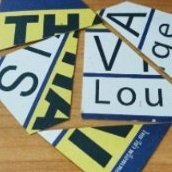Boeing 777 plane crash-lands at San Francisco airport
-
Recently Browsing 0 members
- No registered users viewing this page.
-
Topics
-
-
Popular Contributors
-
-
Latest posts...
-
34
THAILAND LIVE Thailand Live Friday 13 June 2025
UPDATE No Bomb Found on Air India Flight in Phuket – One Passenger Declines to Continue Journey Pictures courtesy of Khaosod. The Director of Phuket International Airport, Mr Monchai Tanon, has confirmed that no evidence of a bomb was found on board Air India flight AI 379, which was forced to make an emergency landing earlier today following the discovery of a threatening message mid-flight. Full story:https://aseannow.com/topic/1363544-air-india-flight-makes-emergency-landing-in-phuket-after-bomb-threat/#findComment-19869462 -
69
Report Debate Erupts Over Police Chase in Helmet Incident in Bangkok
I'm reading this as a Grab Taxi driver with passenger that had no helmet. I've never been offered a helmet when riding a motorbike taxi. -
18
RFK Jr just dropped a 10 Megaton Bomb on the CDC
This is Cuckoo Land. And the Earth is flat, no one landed on the moon, the planet is ruled by lizards from outer space, and cancer is caused by parasites that can be killed by collodial silver. -
-
42
End of an Era: Marks & Spencer Closing Down Across Thailand
They are not going they have gone already. Neither Lotus's, Big C not Family Mart are gone in terms of being out of business. -
136
Krungsri online banking discontinued from 1 October 2025
OK. Krungsri Bank for ATM only. Bangkok Bank for all online payments and transfers. How anyone can say a phone app is more secure than a properly setup laptop and browser connection is ridiculous - it is about the costs. For apps they only need to cover 2 'interfaces' IOS and Android - for computers they have to cover a lot of different interfaces. The claims phone apps are safer, because there is less chance of downloading malware is total khrapp and fake news spewed out by the banking industry (to save costs). Phones are being hacked more and more because they are inherently less secure - sms links, extensions, rogue apps, sim swapping, etc etc etc. Plus phones are stolen and lost everyday - not laptops. I guarantee that all security and defence agencies only use 'real' computers to do what they do because of one reason - security - they dont use effin phones - and phones are not allowed in most 'secure buildings'. MAC Codes and IP Addresses are one thing, but IMEI Codes and IMSI Catchers and Wifi Pings and Bluetooth Hackers is a no brainer in terms of less secure. This aint gonna end well - make sure you phone has wifi and bluetooth disabled - never click on an email or sms if you do not know who it is - and even then not of you do not expect it (such as verification process). If you lose it or have it stolen the ASAP get into the branch or call centre and have the account locked ASAP. Plus - have a second backup bank account with another bank just in case for needed cash while the other one is sorted out. Dont think that if you find it hours later somewhere or it is returned by police that it has not been 'seriously hacked'.
-
-
Popular in The Pub





.thumb.jpeg.d2d19a66404642fd9ff62d6262fd153e.jpeg)




Recommended Posts
Create an account or sign in to comment
You need to be a member in order to leave a comment
Create an account
Sign up for a new account in our community. It's easy!
Register a new accountSign in
Already have an account? Sign in here.
Sign In Now